The first reference to any feature of the country within a radius of 20 miles of Ulladulla was made by Captain James Cook aboard HMS Endeavour while on his voyage north along the Australian east coast. Two days after his discovery of that coast, at 7am on 21 April 1770, he noted in his private log on 22 April 1770**
” At Noon we were by observation in the Latitude of 35°..27? and Longde 209°..23?. Cape Dromedary bore So 28° West distt 19 Leagsa remarkable peaked hill laying inland the top of which look’d like a Pigeon House and occasioned my giving it that name, bore N32.30 W, and a small low Island laying close under the shore bore NW dist. 2 or 3 Leagues”
He goes on to say:
“The land near the Sea coast still continues of a moderate hieght forming alternatly rocky points and Sandy beaches, but inland between Mount Dromedary and the Pigeon house are several pretty high Mountains two only of which we saw but what were coverd with trees and these lay ^inland behind
near tothe Pigeon house and ^are remarkably flat atop with steep rocky clifts all round them as far as we could see – the trees in this Country hath all the appearence of being stout and lofty”
As it was such an identifiable and clearly visible landmark, Cook continued to use Pigeon House Mountain in his logged bearings as he continued sailing northwards.
Almost directly east of Pigeon House Mountain, Cook also saw his first indigenous Australians on the beach near the current Murramarang Aboriginal Area, perhaps on Racecourse Beach Kioloa. Cook’s description:
“we were so near the Shore as to distinguish several people upon the Sea beach they appear’d to be of a very dark or black Colour but whether this was the real colour of their skins or the Cothes they might have on I know not”
Cook made no reference to Ulladulla, however he did name the southern headland of Jervis Bay ‘Cape St George’ because he discovered it on St George’s Day.

Pigeon House-Didthul is 720m high and is also known as ‘Didthul’ (also sometimes spelled ‘Didell’) in the local Aboriginal language, meaning ‘woman’s or mother’s breast’.
Sometimes mistakenly thought to be a volcanic plug, the geological formation of Pigeon House goes back about 100 million years, when the original Ordovician bedrock with the sedimentary rocks above was forced up so that the newly exposed land was hundreds of metres above the sea. The hard upper sandstone layers remained, and can be clearly seen on Pigeon House where the cap of Nowra sandstone has withstood wind and rain, protecting the softer siltstone layers beneath, while the rocks nearby have been eroded to the Ordovician bedrock. The highest layers still contain fossils of marine animals and plants.
